Photo

“The land was flowing with milk and honey. On 21 April 1509 the old king, having grown ever more harsh and rapacious, died in his palace at Richmond on the south ban of the Thames. The fact was kept secret for two days, so that the realm would not tremble. Yet the new Henry had already been proclaimed king.
On 9 May the body of Henry VII was taken in a black chariot from Richmond Palace to St Paul’s Cathedral; the funeral car was attended by 1,400 formal mourners and 700 torc…h-bearers. But few, if any, grieved; the courtiers and household servants were already awaiting the son and heir.” –Tudors by Peter Ackroyd
Yet as Chris Skidmore, Dan Jones, and several others have stated, the first Henry Tudor’s ascension was nothing short of astounding. Nobody expected him to become King. Nobody expected he would win, even with Stanley, he was not supposed to win but he did and he went on to reign twenty four years. While Henry VIII’s story is amazing and he certainly stands well on his own, his father also deserves some credit. He secured the Tudor dynasty, in spite of his harsher policies towards the end of his reign, he ensured that his son inherited a rich realm. Later on in life, Henry VIII commissioned a painting on Whitehall, the palace that Wolsey had given to him when the whole Anne Boleyn business and Great Matter was going on to win back his favor. In this painting Henry appeared magnificent as always in spite of his ulcerous leg and his outstanding weigh, above him was his father and next to them were their respective wives, Elizabeth of York and Jane Seymour. Jane Seymour succeeded where no other consort did and for that Henry chose to remember her. Separating them was an altar that read that while Henry VII was great and brought peace to the realm when he married EOY, his son was better because he brought the true faith to the realm.
“The former often overcame his enemies and the fires of his country and finally gave peace to its citizens but the son born indeed for greater tasks, drives the unworthy from the altars and brings in men of integrity. The presumption of popes has yielded to unerring virtue and with Henry VIII bearing the scepter in his hand, religion has been restored.”
In short. ‘My dad was good, I am better’. Well … not to disrespect Henry VIII, but I think we can all agree that his dad was also great wink emoticon What do you think? I’m interested in hearing your thoughts.
60 notes
·
View notes
Text

ANNA LA MARCK OF THE DUCAL HOUSE OF CLEVES
↳ Future Queen Consort of England and Lady of Ireland
[Painted by Hans Holbein the Younger c.1539, recently restored]
57 notes
·
View notes
Photo

HENRY’S PROCLAMATION AGAINST THE SCOTS: (KILL THEM ALL!) In April 1544 Henry VIII issued a thunderous proclamation against his northern neighbor. It had been one year and a half since his nephew, James V, died, now he sought to take possession of his only legitimate heir, Mary I of Scotland to wed her to his son and heir Edward.
“Put all to fire and sword, burn Edinburgh town, so razed and defaced when you have sacked and gotten what you can of it, as there may remain forever a perpetual memory of the vengeance of God lightened upon them for their falsehood and disloyalty … and as many towns and villages about Edinburgh as ye may conveniently, do your best to beat the castle, sack Holyrood House and sack Leith and burn and subvert it and all the rest, putting man, woman and child to fire and sword, without exception where any resistance shall be made against you and this done pass over to the Fifeland and extend like extremities and destruction to all towns and villages whereunto ye may reach conveniently, not forgetting among all the rest so to spoil and turn upside down the Cardinal’s town of St. Andrews, as the upper stone may be the nether, and not one stick stand by another, sparing no creature alive within the same.”
78 notes
·
View notes
Text


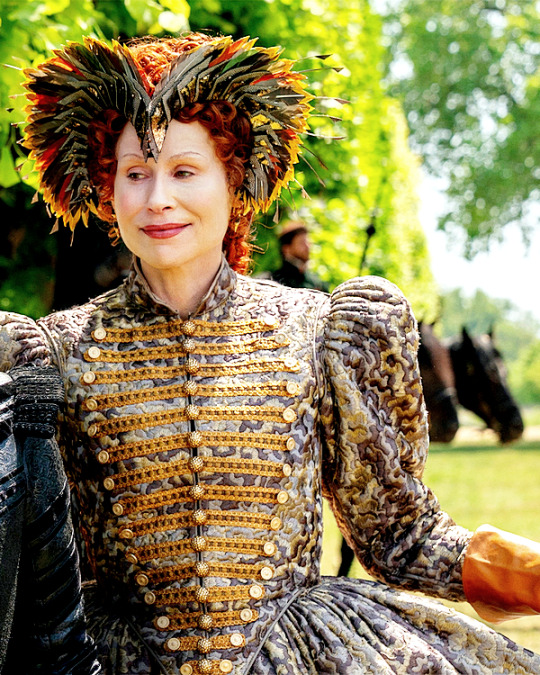
ELIZABETH I, QUEEN OF ENGLAND
↳ As portrayed by Minnie Driver in Starz The Serpent Queen
#the serpent queen#theserpentqueenedit#perioddramaedit#minnie driver#elizabeth i#queen elizabeth i#original edit#edit#show: the serpent queen
55 notes
·
View notes
Text

Kate Phillips as JANE SEYMOUR, QUEEN OF ENGLAND
[BBC's Wolf Hall: The Mirror and the Light Promotional Material]
#wolf hall#wolfhalledit#perioddramaedit#kate phillips#lydia leonard#jane seymour#jane parker#jane boleyn#original edit#edit#show: wolf hall
132 notes
·
View notes
Photo

On the third of April 1578 Margaret Douglas was laid to rest in the Lady Chapel that her Tudor ancestor built in Westminster Abbey
Margaret Douglas was the daughter of Archbibald Douglas and Margaret Tudor (eldest daughter of Henry VII and Elizabeth of York). She married Matthew Stewart, becoming the Countess of Lennox. They had several children, their most known Henry Stewart, Lord Darnley who married Mary, Queen of Scotland in 1565.
Margaret had been chief mourner to our Queen, Mary I, in her funeral. She had been one of her most trusted confidants. And she had been one of the most cunning of women in all Tudor monarchs’ regimes. She was a pragmatic woman and a survivor.
When Elizabeth I sent her son a warning that she held his mother captive so he would not marry the Queen of Scots, Henry refused to listen and Margaret no doubt had prepared him for the worst. Her plans were as her namesake, the Tudor dynasty’s matron -Margaret Beaufort- to make a dynasty of her own through her son and later her grandson (James VI of Scotland).
After Mary Stuart became Elizabeth I’s captive, Margaret and her husband, the Earl of Lennox, worked arduously to secure their grandson James’ future. After his first regent was assassinated, the Earl was sent to replace him but he also died.
The following years Margaret worked tirelessly to secure her family’s future. While she was under guard, she negotiated the marriage between her younger son and Bess of Hardwick’s daughter. A marriage such as this had not upset Elizabeth’s as the last one, being that Bess’ daughter was a commoner and was no threat to her crown.
Margaret was born on year before Mary, so they were closer in age and both could relate to each other better. One important difference however between the two and what made Margaret different from the rest of the other Tudor girls. She never made clear what religion she belonged to. She could be Catholic if the winds were in that faction’s favor, she could be a good and devoted Anglican too if the winds shifted to that faction.
Perhaps this motto of hers found in a heart shaped locket known today as the Lennox Jewel says it better “who hopes still constantly with patience shall obtain victory in their claim”.
And she did prove to be the most patient in the end.
By February 1578, she had received Robert Dudley in her house. After he left, she fell ill. Knowing it might be the end, she wrote her last testament days later on the twenty sixth still in “perfect mind” and “good health of body”. In it, she asked the body of her son Charles (who had died years before leaving only a daughter, Arbella), be buried with her at Westminster. She had made arrangement years before to be buried at the Lady Chapel that her grandfather Henry VII had constructed for him and his wife Elizabeth and his mother, Margaret’s namesake. To make sure that her wishes were carried out, she left certain gifts to the Queen’s favorites, including her adviser William Cecil.
She died a week and a half later in March 10, and on April 3 she had a funeral worthy of a royal princess.
Margaret Douglas as Mary I, has often been neglected in history. While she doesn’t suffer from the over-deification of Elizabeth or the vilification of Mary I, and in this perhaps she is the most lucky of the Tudor women; nonetheless, she has suffered from severe neglect in the historical record. It is true that she was never a queen nor a ruler in her own right, but she made history in her own way and knew how to play by the rules of each game to get what she wanted. She obeyed the rule of the law, follows dress codes and moral codes to a fault, and always made sure her family came on top one way or another.
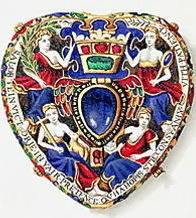
Buried with the founders of the Tudor dynasty, Margaret sent a powerful message, that as it was painted on the “Lennox Jewel” where her motto was engraved, it would be her line that took the continued on with their legacies after Elizabeth was gone.
Some of her contemporaries described her as “a lady of most pious character, invincible spirit, and matchless steadfastness … mighty in virtue … mightier in lineage” and that she was a “progenitor of princes” in her son Darnley and in her grandson, future James I of England.
Sources:
Tudor by Leanda de Lisle
On This Day in Tudor History by Claire Ridgway
Westminster.org (http://www.westminster-abbey.org/our-history/people/margaret-douglas,-countess-of-lennox )
30 notes
·
View notes
Text

Similarities between Anne Boleyn and Elizabeth I: Torn Apart but Not Forgotten:


“It has been argued that, as queen, Elizabeth’s power was to some extent maintained by what has become known as the “cult of Elizabeth,” a practice of adoring and venerating the queen which blended the language of courtly love with that of religion, to present her as a semi-divine figure. “Courtly love” long predated the Renaissance but was very much a part of elite culture in the sixteenth century, revitalized by the influence and inclusion of the new humanist learning. In England, the tradition of courtly love is particularly associated with one earlier queen, Eleanor of Aquitaine, but by the sixteenth century, the form promoted by Eleanor’s father, Guillaume IX of Aquitaine, had become a culture universal among the European ruling classes. Courtly love and its correlative, chivalry, provided a code of conduct which pertained from the battlefield to the “pastime” of the royal chamber. It was a highly complex, witty, stylized, exclusive, and sometimes subversive intellectual game in which both courtiers and kings aspired to produce the most subtle and ingenious forms of homage to their (often fictitious) lady loves.
(...)
Anne’s court, like Elizabeth’s, was one of poetry, while the “cult of Elizabeth,” if such there was one, was based on a manipulation of the tropes of courtly love, of that culture of romantic literary chivalry which had played such a significant part in her parents’ courtship. And Anne Boleyn, until Cromwell decided to be literal rather than literally minded, was a mistress of the art. In one reading of Cromwell’s actions in 1536, it was courtly love which he used to bring Anne down, and it was Elizabeth’s appropriation of her mother’s practices, if not her errors, which enabled her so triumphantly to manipulate the mechanics of her mother’s disgrace into her own unique form of political glory.”
Source quoted: Elizabeth: Renaissance Prince by Lisa Hilton
There are additional sources you should also look out for that also point this out and briefly discuss the connection Elizabeth I maintained with her mother through the people she surrounded herself with before and after she became queen. For example:
1. Boleyn Women by Elizabeth Norton
2. Private Lives of the Tudors by Tracy Borman
7 notes
·
View notes
Text
Throwback to the beautiful Dorothy Tutin as English consorts, Queens Anne Boleyn, second wife of Henry VIII and mother to Elizabeth I, and Queen Henrietta Maria, wife of Charles I and mother to Charles II and James II.

Out of all the Anne Boleyns, Dorothy is one of my favorites because she showed the good and bad aspects of Anne’s character and the way she conducted herself before her trial and afterwards confessed to Cranmer were very powerful and moving scenes. In my opinion, it is one of the best historical dramas about the six wives that gets better with every rewatch.
As Henrietta Maria, Dorothy Tutin also did a great job showing the only complex character in a movie that was meant to show either saintly flawless characters or inept and corrupt ones.
At the beginning we think we are going to introduce the archetypical evil woman of Cromwell’s imagination but instead we are treated to a woman who’s proud of her lineage, but also a deeply devoted, caring wife and mother who believes she’s doing what is in the best interest for her husband and her family.
#dorothy tutin#period dramas#show: henry viii and his six wives 1970#anne boleyn#movie: Cromwell#henrietta maria#queens of england#tudors#stuarts
6 notes
·
View notes
Text






Jude Law as HENRY VIII, KING OF ENGLAND
with Alicia Vikander as CATHERINE PARR, QUEEN OF ENGLAND
and Eddie Marsan as EDWARD SEYMOUR, EARL OF HERTFORD
[Firebrand promotional material]
#firebrand#firebrandedit#perioddramaedit#jude law#alicia vikander#eddie marsan#henry viii of england#henry viii#catherine parr#katherine parr#edward seymour#original edit#edit#movie: firebrand
162 notes
·
View notes
Photo

On the 24th of March 1603, King James VI of Scotland of the Stuart Dynasty succeeded his cousin, Queen Elizabeth I of England. He was crowned King of England and Ireland on the 25th of July of that year. He reigned England and Ireland for 22 years. He was succeeded by his second son, the ill-fated Charles I.
The picture you see here is the Stuart Family Tree portrait (c.1603), depicting his Tudor and Stuart ancestry, and thus from the former, his claim to the English throne that stemmed from Margaret Tudor, eldest daughter of Henry VII.
To honor his Tudor predecessor, he transferred the bodies of Elizabeth and Mary into one tomb and had one big effigy commemorating the former. The only mention that pointed to Mary being buried there was a plaque that hoped that the two would be reunited in the afterlife and in the resurrection.
Sadly, James VI of Scotland and I of England and Ireland didn’t turn out to be a popular King (in the long run). He sponsored the arts, like William Shakespeare (as Elizabeth I had done), but his flamboyance annoyed many people and before you know it, people began looking to the past, feeling nostalgic about the ‘good old days’ when Queen Elizabeth I was their monarch.
Image: James I’s Family Tree portrait (c.1603), emphasizing his Tudor and Stuart lineage.
77 notes
·
View notes
Photo
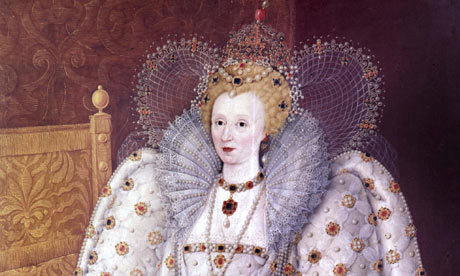
24 MARCH 1603: DEATH OF GLORIANNA & THE END OF AN ERA.
On this day, Queen Elizabeth I died at Richmond Palace at the age of sixty nine. She had ruled England for forty five years, the longest reigning monarch in Tudor history and the third longest ruling female monarch in English history. Elizabeth I was the daughter of Anne Boleyn and Henry VIII. She was born on September 7th, 1533, she was bastardized less than three years later in 1536, following the execution of her mother. It is not known whether Elizabeth remembered her mother, likely she did not. However, she spent a lot of time with people who did, namely her maternal family. Through them, she probably got to know the woman who gave birth to her. She had one ring with her picture on it, and while she didn’t renew the validity of her parents’ marriage as her sister had done with hers; she made them an important part of her coronation celebrations, showcasing them together along with their sigils, the Tudor rose and the glorious white falcon crowned. Elizabeth also made an important point of showcasing her paternal grandparents, Henry VII and Elizabeth of York and what their union represented: The end of the wars later known as the wars of the roses, and the bringing of peace.
Elizabeth I’s reign was not an easy one and she was always plagued by conspiracy, betrayal and suspicion. As she got older the Queen saw enemies everywhere, and as her predecessors she became more ruthless. While her religious establishment was more conciliatory than any of her ancestors (especially her father, sister and brother) had been, she still burned heretics, namely Anabaptists, and persecuted many Catholics who resisted her rule.
Out of all the monarchs, Elizabeth was unique in the sense that she never married. She refused to be tied to anyone; not so much because she feared love but because as a woman in a country that was not used to female rule, she knew that being married would mean submitting to her husband’s rule, or worse. If she married into another House, that House would expect more favor than the others and that could disrupt the whole order of things. Elizabeth I had many favorites nonetheless, but it is unlikely she had any sexual relations with any of them. They were more of platonic love interests, who gave the Queen companionship and who (like Robert Dudley, Earl of Leicester) also served as faithful advisors.
At the time of the Queen’s death, the same speed at which she had prepared when her sister lay dying, her councilors were quick to dispatch letters to everyone, including their preferred monarch to succeed her, James VI of Scotland. On 9 March Robert Cecil, the son of her most trusted advisor, William Cecil Lord Burghley, wrote to George Nicholson, the English Ambassador in Edinburgh, informing him that the Queen was ailing and that “her mouth and tongue” were “dry and her chest hot” and that she couldn’t sleep anymore. This is somewhat false. Elizabeth was deathly ill, but she was far from helpless as Cecil’s report suggests. She was in fact, walking back and forth in her chambers, perhaps pondering of what the future would bring once she was gone. Less than a week later, she became worse and was no longer able to move so freely. On the 19th of March she gave a last audience to Sir Robert Carey (Mary Boleyn’s youngest grandson). She held Carey’s hand and confessed to him that she was not well. Her cousin tried to cheer her but it was clear to everyone that their beloved Queen wouldn’t live for much longer.
On Tuesday, the twenty-second she was brought to her bed where she stayed until her death. Her councilors visited her and insisted that she dictate her will, but she refused. Like before, Elizabeth refused to name an heir. All those who had been potential heirs, had suffered tragic fates. Katherine Grey had been punished for marrying without royal permission, and with her only witness to her wedding, dead, she had been incarcerated and forced to give birth (twice) in prison. Then she died from depression. Her youngest sister, Mary Grey was forbidden from having intimate contact from her husband who was of lower rank, with no royal ties whatsoever. She was later forgiven and became one of Elizabeth’s most loyal subjects. Her other cousin, Mary Queen of Scots, suffered the worse penalty by being executed for plotting against her. Her son, James VI, was Elizabeth I’s councilors favored heir.
According to one story, on the day before her death, the Privy Council seeing that she was unable to speak, suggested that she raised her finger to the successor she’d like. Supposedly, she raised her head when they mentioned James, giving her approval to her late enemy’s son. Others who were present, said that she never moved.
It didn’t matter in the end. Everyone was set on James and probably Elizabeth knew it, and that could have been the reason she refused to move, knowing that as the sun was setting on the Tudor dynasty, nothing she did, would have changed her soon-to-be former subjects’ minds.
“This morning Her Majesty departed from this life, mildly like a lamb, easily like a ripe apple from a tree … Dr. Parry told me he was present, and sent his prayers before her soul; and I doubt not but she is amongst the royal saints in heaven in eternal joys.” –John Manningham
She died on the next day, between two and three o’clock in the morning.
Eight hours later, her cousin, Sir Robert Carey with whom she had an audience days before, was given the order to go North to Scotland to carry the ring his sister had taken from the Queen’s finger and deliver it to James as confirmation of his new future as King of England.
It was the end of the Tudor Dynasty and the beginning of the Stuart Dynasty.
Some historians today dispute the image of Elizabeth as Glorianna, and while their reasons are well-founded, no one can deny that Elizabeth I was unique in many ways, and that as her sister; she fixed the coinage that had been debased during their father’s and brother’s reigns. And while her “idiosyncratic attitude to marriage left her equally isolated … she was saved, once again, by divided counsel” writes Starkey. Therefore, after nearly forty five years of rule, Starkey adds, “she handed over to her Stuart successor something that was recognizable as the inheritance of Henry VIII”. And yet she continues to divide public opinion. Some want to portray her in a negative light, overturning previous propaganda, and this is equally bad because it is doing the same, only in another extreme. In reality, Elizabeth was as Leanda de Lisle, Tudor biographer, writes in her latest book, neither heroine nor villain. Both she and her sister, ruling England, a country which had a negative perception of female rule, were both “rulers of their time”. Both had to take on the role of mother. Mary had shown herself as a mother to her children in her speech during the Wyatt Rebellion. Elizabeth I had done the same, and gone a step further by presenting herself as the defendress of the faith, as a new Deborah, defending the precepts of the holy tenant, a reluctant warrior who would be mother and protector to her people. It was an image that put everyone at ease, and by doing little to change the social order, she earned the acceptance of most of her subjects.
Truly as Claire Ridgway says in her book “On this day in Tudor History”:
“Elizabeth I’s death was the end of an era in so many ways: the end of England’s Golden Age, the end of a long reign and the end of the Tudor dynasty.”
After James ascended the throne and people grew tired of his extravaganza, people began to think differently of their late queen, and the legend of Glorianna began, a legend that has endured since then.
Sources: Elizabeth the Struggle for the Throne by David Starkey, Tudor and Sisters who would be Queen by Leanda de Lisle, Tudor Age by Jasper Ridley, Anne Boleyn Collection and On this day in Tudor History by Claire Ridgway.
51 notes
·
View notes
Text
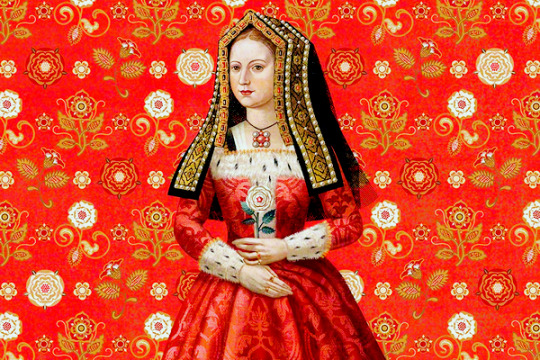


Alison Weir’s The Tudor Rose Series portraiture by The Balbusso Twins
Elizabeth of York, The Last White Rose
Henry VIII, The Heart and The Crown aka The King's Pleasure
Mary I, The Queen of Sorrows aka The Passionate Tudor
#portait#art#elizabeth of york#henry viii of england#henry viii#mary i of england#mary i#original edit#edit
132 notes
·
View notes
Text

Mary I, Queen of England by The Balbusso Twins
Mary I: Queen of Sorrows by Alison Weir
175 notes
·
View notes
Text
Singing, dancing, and music surrounded this lady princess in her youth. She herself learned to dance, to play instruments, and to love the music of the 13 minstrels retained by Edward IV for entertaining at court festivals.
The minstrels' trumpets,shawms,small pipes, and strings added a professional component to her early musical education and became a vital, ever-present part of Elizabeth of York's life. As queen, Elizabeth retained her own minstrels quite separate from those of Henry VII⎯and rewarded them generously. Her own children played the lute, virginal, clavichord, and organ, while she herself played the clavichord (and perhaps other instruments). Her son Henry VIII became renowned for his singing, dancing, and composing.
⎺ Elizabeth of York (Queenship and Power), Arlene Okerlund
41 notes
·
View notes
Text
Quite apart from its political implications as an identifying emblem for the Tudors, the rose was an important and pervasive Marian and Christological symbol that was used throughout the Middle Ages. Although in a religious context its significance was multi-layered and thus sometimes convoluted, basically the rose was used to refer either to specific qualities of the Virgin or to the Virgin herself and to the Passion of Christ. It is especially relevant, therefore, with regard to the derivation and rationale of the Tudor device of the rose, that both the Virgin and the Passion of Christ were central to Henry VII's personal devotions, as his will clearly indicates and the imagery of his chapel demonstrates. Thus, unquestionably, beyond its dynastic use, the rose would have had significance for him personally in its capacity as both a Marian and Christological symbol.
— Virginia K. Henderson, Retrieving the "Crown in the Hawthorn Bush": The Origins of The Badges of Henry VII | Traditions and transformations in late medieval England
26 notes
·
View notes
Text
Of note was the multi-cultural nature of the king’s personal staff. Though the majority of Henry VII’s closest servants in the Privy Chamber were derived from the families of minor gentry, there are named within the payment books a profusion of Bretons, French and Welsh household servants and courtiers. This perhaps might have been expected initially, given the composition of Henry’s supporters at Bosworth and the fourteen years he spent in Breton and French exile prior to the battle, but the numbers remained or were renewed throughout the reign.
— Margaret Condon, Samantha Harper and James Ross, The Chamber Books of Henry VII and Henry VIII, 1485-1521: An Analysis of the Books and a Study of Henry VII and his Life at Court.
To illustrate the point, two of the highest paid, and probably among the most intimate body servants of the king, are elusively mysterious. Piers Champion and Piers Barbour may have been Breton in origin, and may have come to England with the king in 1485. Both received the same salary of 66s 8d per quarter from the Chamber in the 1490s, and both were trusted to receive money intended for the king’s hands in the first receipt book (1488-1490).
21 notes
·
View notes
Text


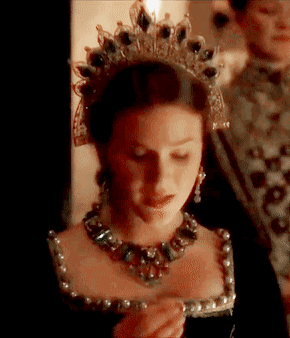

♛ @dailytudors Tudor Week 2023
Day 3 : Best Tudor myth: Holbein's flattery and a 'Flanders mare'
" Hans Holbein the Younger altered his portrait of Anna of Cleves to enhance her beauty
Part of the negotiations for the marriage with Anna included a trip by court painter Hans Holbein the Younger to Cleves to depict Anna and her sister Amalia. Holbein was chosen for several reasons. He was one of Henry’s favorite painters and, most importantly, he had a reputation for realism in his portraits. Henry accepted Holbein’s vision of Anna and this is confirmed by the very fact the negotiations for the marriage went forward."
"Cromwell had greatly miscalculated in making an alliance with the Germanic states. Anna’s brother, Wilhelm, had entered a dispute with Charles V over the ownership of the strategically located and economically important Duchy of Guelders. The claims of both men were tenuous and complicated, but by the time of Anna’s marriage to Henry, the argument had reached the point where they were on the brink of war. Because of the Cleve’s alliance, Henry was about to be drawn into a conflict with the Hapsburg Empire."
"It was only after the Cleves alliance became a problem that Henry had to state one of the reasons for annulling the marriage was his dislike of Anna’s appearance.
The reality is, Holbein remained in royal favor after the marriage fell apart and retained his job as a court painter until his death in 1543. Henry did not blame him for the debacle of the Cleves alliance and marriage. The courtiers who had written flattering reports about Anna were held responsible by the King. In fact, Hans painted his charming portrait of the future King Edward VI and presented it to King Henry as New Year’s gift in 1540."
"Henry called Anna, Duchess of Cleves a ‘Flanders mare’
There is no contemporary source in existence for this comment. The first reference comes from the book “An Abridgement of Bishop Burnet’s History of the Reformation of the Church of England, Volume 1” written in 1679 by Gilbert Burnet, Bishop of Salisbury, who is not always a reliable source. He says Henry ‘swore they had brought over a Flanders mare to him’. But there is no earlier written historical evidence this comment was ever made by Henry. Also, Henry knew good and well Anna was not from Flanders."
Heather R. Darsie, Susan Abernethy
Sources: { x } // { x }
128 notes
·
View notes